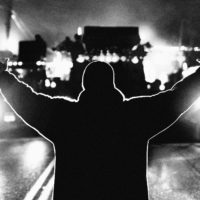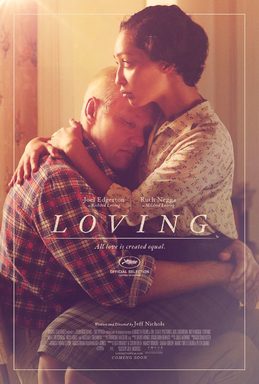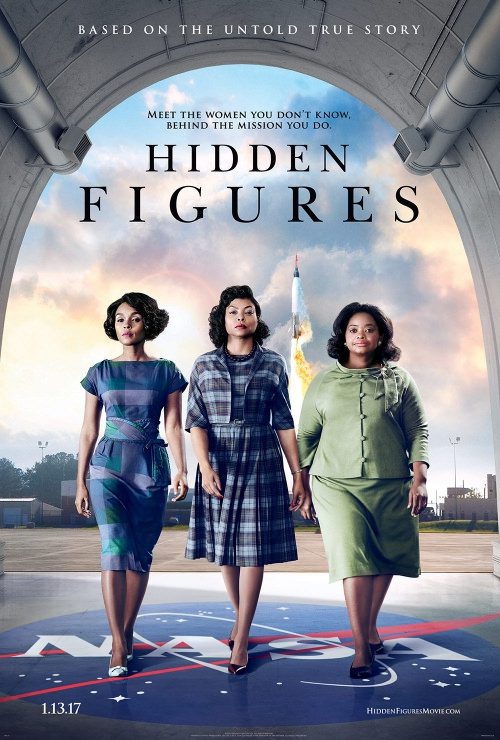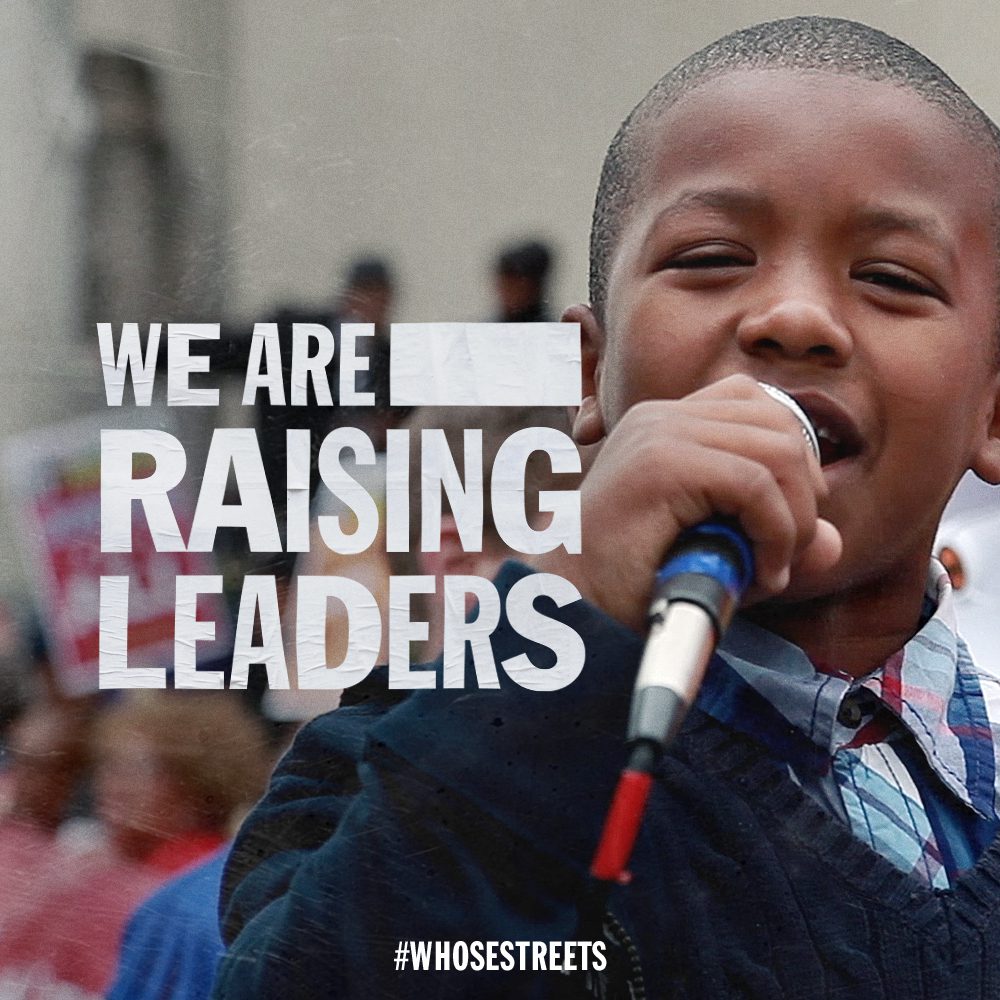“So, let us summon a new spirit of patriotism, of responsibility, where each of us resolves to pitch in and work harder and look over not only ourselves, but each other.”
– Former President Barack Obama, November 5, 2008 Presidential Victory Speech
“At the bedrock of our politics will be a total allegiance to the United States of America…[W]hen you open your heart to patriotism, there is no room for prejudice.”
– President Donald Trump, January 20, 2017 Presidential Inauguration Speech
The task of redefining “patriotism” to include as a prerequisite the eradication of institutional racism against Black Americans has proven itself a fruitless task. As George Orwell aptly put it in 1945, patriotism is a “devotion to a particular place and a particular way of life…[and] is of its nature defensive, both militarily and culturally.” To put it even more severely, Russian essayist Lev Tolstoy stated in his 1894 essay “On Patriotism”: “Patriotism today is the cruel tradition of an outlived period which exists not merely by its inertia, but because the governments and ruling classes… persistently maintain it.” Under either definition, patriotism is fundamentally a continual extension of its cruel roots, and one which—as pertaining to civil rights for black Americans—several recent films have either obtusely chosen to lionize, or perpetually criticize to the point of despair.
In the United States, “patriotism” is rooted in our most celebrated war, the American Revolution, which resulted in the emancipation of white colonists from British rule, and a US Constitution which not only condoned slavery, but expressly sanctioned it by designating slaves as three-fifths of a human being for electoral purposes. Given the blessing of our most patriotic forefathers — several dozen of whom were slave owners—white American landowners proceeded to exponentially increase slave ownership from 694,207 to 3,950,546 black lives from 1790 to 1860.
Whereas the origin of this country’s most successful economic and imperialistic period was rooted in a “devotion to a particular life” which included slavery, black Americans who continue to seek a total, egalitarian departure from these patriotic roots in 2017 inevitably face a litany of “defensive” measures from the federal government and other ruling classes, including Hollywood.
In one sense, Jeff Nichols’s Loving (2016) deserves to be recognized as an intimate, humanistic portrayal of the Lovings—a Southern interracial married couple who lived under Virginia’s anti-miscegenation law as they awaited with impossible patience the Supreme Court’s determination of the law’s constitutionality.
And yet, because much of Loving is about the dignity of waiting, the scene on which the film’s ultimate “feel good” and certainly patriotic emotion pivots is an establishment shot of the United States Supreme Court—a low angle take of the Court’s magnificent alabaster columns under a clear blue sky, signifying that the Loving family had finally arrived at America’s pearly white gates to receive justice from “The Highest Court of the Land.”
“If one race be inferior to the other socially, the Constitution of the United States cannot put them upon the same plane.”
– Supreme Court Justice Henry Brown, Plessy v. Ferguson (1896)
“A Constitution is not meant to facilitate change. It is meant to impede change, to make it difficult to change.”
– Supreme Court Justice Antonin Scalia (1986–2016)
Loving is a genuinely well-meaning film. But it is also yet another uncritical take of the Supreme Court, and thus insistent on an inert, highly deceptive patriotic trust in the Court’s utilization of the Constitution toward hastening the obtainment of basic human rights.
Contrarily, that same “Highest Court of the Land” was also responsible for the abhorrent “separate but equal” doctrine in Plessy v. Ferguson in 1896, in which the Court constitutionally authorized state and local governments to segregate blacks from public facilities including schools and transportation, and conveyed the powerful cultural message that private institutions were also authorized to segregate blacks from “the ruling class.”
Astonishingly, it took the Court nearly sixty years—a period amounting to a full generation of black families legally and violently precluded from “a particular way of life” enjoyed by the “ruling class”—to concede in Brown v. Board of Education the glaringly obvious concept that “separate but equal” was just another form of racial suppression.
Despite this history of impediments toward human rights and progressivism (see also, Bush v. Gore), Loving still uncritically presents the Supreme Court as a beacon of eventually progress. Accordingly, Loving’s patriotic pride in our federal government unwittingly promotes patriotism’s ultimate objective: “to persistently maintain a way of life for ruling class,” and to only make limited concessions to basic human rights for black Americans on perpetually extended deadlines, and with interpretive impediments along the way.
“[P]eople want to take everything back to the flag, but that’s not what we’re talking about. We’re talking racial discrimination, inequalities and injustices that are happening across the nation.”
– Colin Kaepernick, NFL Superbowl Quarterback, 2012–2013 season
It is admittedly harder to be critical of Hidden Figures (2017), a film inundated from its first minute in a feel-good message about how three exceptional black female NASA mathematicians successfully navigate through the federal government administration’s racial segregation and sexism to orchestrate the magnificently patriotic launch of astronaut John Glenn into orbit in 1961.
But what is so jarring about Hidden Figures, which made $170,000,000 in the domestic box office and won a 2017 Oscar Best Picture along with another eight-six award nominations, is the film’s insistence on conjoining uplifting messages about both black women’s struggle against racism, and the very racist, federal government institution which sought to oppress these women’s efforts to help this country.
In Hidden Figures, NASA’s segregationist policies — inaccessible black bathrooms, racially segregated calculation rooms, redacted information for white eyes only, and all-white board rooms absent a hint of promotional possibilities for blacks — are reduced to Hollywood plot line hurdles. The supremely gifted and surreally patient mathematicians in question — Katherine Johnson (Taraji Henson), Dorothy Vaughn (Octavia Spencer), and Mary Jackson (Janelle Monae) — jump over each hurdle amid a flurry of tender moments of friendship and budding Hollywood romance, physical comedy, sharp bon mots, and an uplifting background score and soundtrack reserved for emotionally elevating montages aplenty.
Within this same Hollywood course of business, Hidden Figures treats NASA’s Caucasian gatekeepers — played by mainstream Hollywood darlings Kirsten Dunst, Kevin Costner, and Paul Stafford (the worst racist offender, but tempered by brand recognition as lovable genius Sheldon from The Big Bang Theory) — as misguided patriotic saviors-to-be. When the time comes, and on the terms of NASA’s “ruling class,” each gatekeeper will gracefully permit these immeasurably talented black women to do more work for them to maintain America’s happy image as the best at everything.
And yet, Hidden Figures filled me with tears, perhaps in large part due to a confluence of its timely release amid a country in crisis, just days before President Trump came to office, and its soothing messages on black female empowerment.
But as months have gone by, Hidden Figures has transformed into a painful reminder that the US entertainment industry’s insistence on preserving patriotism is dangerously deceptive. For just as 3,400 theaters celebrated Katherine Johnson and a racist NASA in 1961, this country in 2017 had just inaugurated a man into the White House who shamelessly executed a heinously sexist, bigoted, white nationalist campaign in the name of making “America Great Again.” More than 90% of black women felt otherwise.
“I love America more than any other country in this world, and, exactly for this reason, I insist on the right to criticize her perpetually.”
– James Baldwin, Notes of a Native Son (1955)
“[N]ot even the most vindictive hatred could have imagined the slimy depth to which the bulk of white Americans allowed themselves to sink: noisily, gracelessly, flatulently, and foul with patriotism.”
– James Baldwin, The Devil Finds Work (1976) (commenting on the McCarthy Era)
While Hidden Figures celebrated NASA’s space launch in 1961, and Loving the eventual goodness of the Supreme Court in 1967, Raoul Peck’s I Am Not Your Negro — a superior film in just about every level of cinematic language — was also playing in an exceedingly modest three hundred and twenty theaters, and with a February release date cast away from Hollywood’s Oscar Best Picture showcase the prior two months. This should come as no surprise, as I Am Not Your Negro is a perpetually critical take on modern day America, and thus a third-party candidate by default.
Peck’s documentary—which if Hollywood cared about equality more than bloody jingoism would have been nominated for Best Picture—is a masterfully edited blend of non-linear footage connecting 1920s–70s white propagandist Hollywood films and actors, Jim Crow America, modern day corporate America, and 21st Century police brutality together as an immortal, multi-headed monster cloaked under a patriotic veneer.
No modern day, platitudinous image of patriotism is safe from Peck’s deeply searching critique, as is reflected by one of the film’s early juxtapositions—moving from 1950s billboard cartoon advertisements of smiling black servants delivering white people food to a nighttime tracking shot of patriotic 21st century Times Square. The latter footage is basked in digital corporate advertisements and a massive LED American flag, as if to suggest a glossy coverup of an ugly racism not too different from fifty years ago (perhaps seen in a storefront window display of a Martin Luther King, Jr. bobblehead, for sale next to Hollywood frequently casted Native American Slayer, John Wayne).
The film’s footage is continuously guided by Samuel L. Jackson’s soft, plaintive voiceover narration of excerpts from American ex-patriot author James Baldwin’s 1976 The Devil Finds Work, a stream-of-conscious style series of essays on Hollywood cinema’s perpetuation of racist norms, and from Baldwin’s incomplete Notes Toward Remember This House, in which Baldwin had begun to connect the lives of three iconic American Civil Rights activists — Medgar Evers, King, and Malcom X — each of whom were murdered two years apart from one another, between 1963 and 1967.
The film’s steady accrual of these black activists’ assassinations is a diagonally upward beam linking one of the film’s first scenes of black American Dorothy Counts’s harrowing morning walkthrough into an all-white school in 1957, to one of the film’s final night shots of black Americans, surrounded by an even more frightening army of military-equipped paratroopers, as they protested police officer Darren Wilson’s fatal shooting of an unarmed college student, Michael Brown, in Ferguson, Missouri, on August 11, 2014.
Closing out an American film with footage of police treatment of black protestors as “the enemy”—or, in the case of Ava Duvernay’s feverish indictment of “broken windows” policing and the prison industrial complex in her 2016 documentary 13th—a final montage of videos capturing fatal police shootings of non-violent black men and innocent black children, is decidedly not patriotic. Unlike Hidden Figures and Loving, neither documentary accepts the federal government will eventually be a savior for civil rights, nor persists in celebrating America for its intermittent, fractional efforts to combat institutional discrimination over the last several decades.
Still, while both films don’t subscribe to patriotic tenets, they are still heavily burdened by them. Each film’s painstakingly acute observation of our country’s patriotic inertia, rendered over a slew of staged interviews about the uncontrollably growing prison industrial complex in 13th, and Baldwin’s omniscient narration about racism as a timeless American fixture in I Am Not Your Negro, engenders their own feeling of helplessness caused by institutional racism’s boundless reach, and by patriotism’s complicity.
While these exquisitely conveyed cinematic messages are essential toward stark awakening from false notions of racial progress, they beg the question of the how to escape inertia toward real, continuous movement toward the urgently needed equal treatment of black Americans. Is this even possible in our lifetime?
“The only way to support a revolution is to make your own.”
– Abbie Hoffman, American political and social activist
First-time directors Sabaah Folayan’s and Damon Davis’s Whose Streets? will have its nationwide release on August 11, 2017, at the three year anniversary of the Ferguson police shooting. From the film’s title to its footage, Whose Streets? signifies a necessary progression in the civil rights documentary genre from experts’ and authors’ precise clarification of American history, to a community’s intimate reflection on building a movement toward prioritizing racial progress in the future.
Shot entirely in real-time, with narration exclusively from Ferguson community members and activists, Whose Streets? remains searingly present in a time of American crisis. For Folayan, Davis, and the Ferguson community, there is no resting on patriotism’s eventuality, nor is there inundation in patriotism’s awesome insistence in cruel tradition. There is simply no time for this.
The film commences with footage of Ferguson’s denizens in their homes and on their suburban streets as family, friends, and neighbors question the fatal shooting of the beloved Michael Brown, and express building outrage at the St. Louis police force’s impossibly slow removal of Brown’s corpse—which is seen face-down and still bleeding on Canfield Drive, “for about four hours, in the unrelenting summer sun.” Absent staged interviews to recount these events, or camera footage with voiceover to create a sense of “history,” the use of handheld digital cameras throughout this appalling sequence brings viewers onto the ground with these shocked families.
Whose Streets? should feel even closer to home for a wide cross-section of audiences, because Ferguson is middle America: an increasingly racially mixed, working class suburban municipality which is struggling with increased poverty and lessening economic opportunities. Across West Florissant Avenue, on which much of the Whose Streets? protest footage takes place, are familiar 21st century suburban fixtures: a McDonalds, a Family Dollar store, a family run liquor market, mall outlets, boarded up businesses, and homes with cracked sidewalks and wild grass that belie a withering middle-class, 1950s suburban dream. Which is to say, what happened on West Florissant — particularly given “broken windows” policing predominance in neighborhoods with substandard socioeconomic conditions—may feel chillingly close to a higher percentage of Americans today than several decades ago.
Immediately after Brown’s death, a several day rash of protests, riots, and excessive police force erupted across West Florissant. Demonstrations continued intermittently over the course of the next year when a St. Louis Grand Jury decided not to indict Officer Wilson on November 24, 2015, and again on the one year anniversary of Brown’s death. To have followed these course of events on the news likely entailed an informative, yet not too uncomfortable experience in small increments, over small screens which marginalized the senses, and under a adorned array of social media commentary textually dissecting who is at fault, as opposed to the underlying causes of this havoc.
It is quite another experience to see and hear the Ferguson protests in Whose Streets?, which plunges into street footage over several lengthy, uninterrupted takes. The nighttime scenes are severe and uncomfortable, particularly if experienced in a theater with a large screen, surround sound, and without the benefit of a pause button—which is to say, a medium which fully submerges viewers into a suburban street turned into a war zone littered with heavily armed paratroopers, military Humvees, scowling K-9 dogs, citizens wailing that their eyes are burning from plumes of tear gas, riots, and fires.
Because the protestors are the film’s narrative guides, the audience’s attention falls squarely on them. The results are raw, unadorned conversations between Ferguson’s participants and the audience. At the beginning of the film, a Twitter post—in a departure from a medium easily identified as a clownish bully pulpit or a neo-liberal bubble—announces Brown’s death as a simple, frightening observation: “I just saw someone die, OMFG.”
The dialogue continues in this fashion, as a stark recordation of events rather than a staged interpretation of contemporary politics, the latter which has all too often become the norm in lesser documentaries. One resident helplessly yells in outrage when, protesting on his fenced front lawn, a police officer throws a live tear gas canister can on his property. A woman asks a police officer to cordon her through a safe route home during a night of violent protest; he responds from a distance “go back, ma’am,” conveying to her and the audience that the only way back home would be through a veritable battlefield on her block. On another morning, a community member presents the audience with a box of leftover gas canisters and rubber bullets in his neighborhood. When later in the film a resident wryly jokes that Obama’s University of Chicago version of the Constitution isn’t the same as in Ferguson, his comment is particularly well-earned.
Had Whose Streets? pivoted entirely on its war zone protest scenes, it would have served as yet another searing indictment against institutional racism and police brutality. But Whose Streets? blends in refreshing amounts of humanism into its footage by featuring the community’s everyday ordeal on equal terms with its “newsworthy” protests and riots. In one notable scene, two black men sit in a car together eating fast food; instead of engaging in typical small talk, they discuss how their friends have been harassed by the municipalities’ aggressive issuance of traffic violations, and the courts’ liberal sentencing of jail time for their failure to pay several hundred or thousand dollar fees for minor violations.
Quietly capturing this plain injustice is a remarkable departure from cinema’s more usual exclusive indulgence in epic-legal fetishes like OJ: Made in America, or The Night Of—those, which I can attest as a public defender, do not represent the daily rigors of defending indigent clients’ due process rights. Indeed, in some scenes Whose Streets? points to a necessary direction of covering everyday black American struggle, a shift in cinematic language essential toward harnessing a movement where everyone becomes urgently vested in addressing all gross racial inequities, including the more ordinary ones which don’t immediately pop across the TV screen or on YouTube.
It is unlikely I will see the US justice system evolve toward an egalitarian ideal in my lifetime. But Whose Streets? does offer a clearly visible North Star. This is not the film’s screen text of the Declaration of Independence. Rather, it is the presentation of bold and uncompromising partners Brittany Ferrell and Alexis Templeton, and of Brittany’s adorable, whip-smart daughter Kenna. The latter half of Whose Streets? closely follows Brittany and Alexis, among other community organizers, as they rebuild Ferguson, and educate their children and the community youth on political activism. When Ferrell and Templeton marry, a guest yells out “Revolutionary Love”—an inspiring term, and also a rapidly growing human rights organization.
In the final scene, staged during one of the litany of peaceful yet passionate protests also well documented in the film, it is Kenna who does something quite remarkable. She gets up in front of a microphone resting on a staircase, because she has something important to say. Notably, the camera does not look up, as would be the case with stock footage of a courthouse or the White House. Rather, the lens is pointed straight at the young girl, her parents standing proudly by her.
And I had an enlivening sense the wheels may finally be starting to spin hard enough, and in the right direction.
***
Image credits: feature image, image 1, image 2, image 3, image 4.








